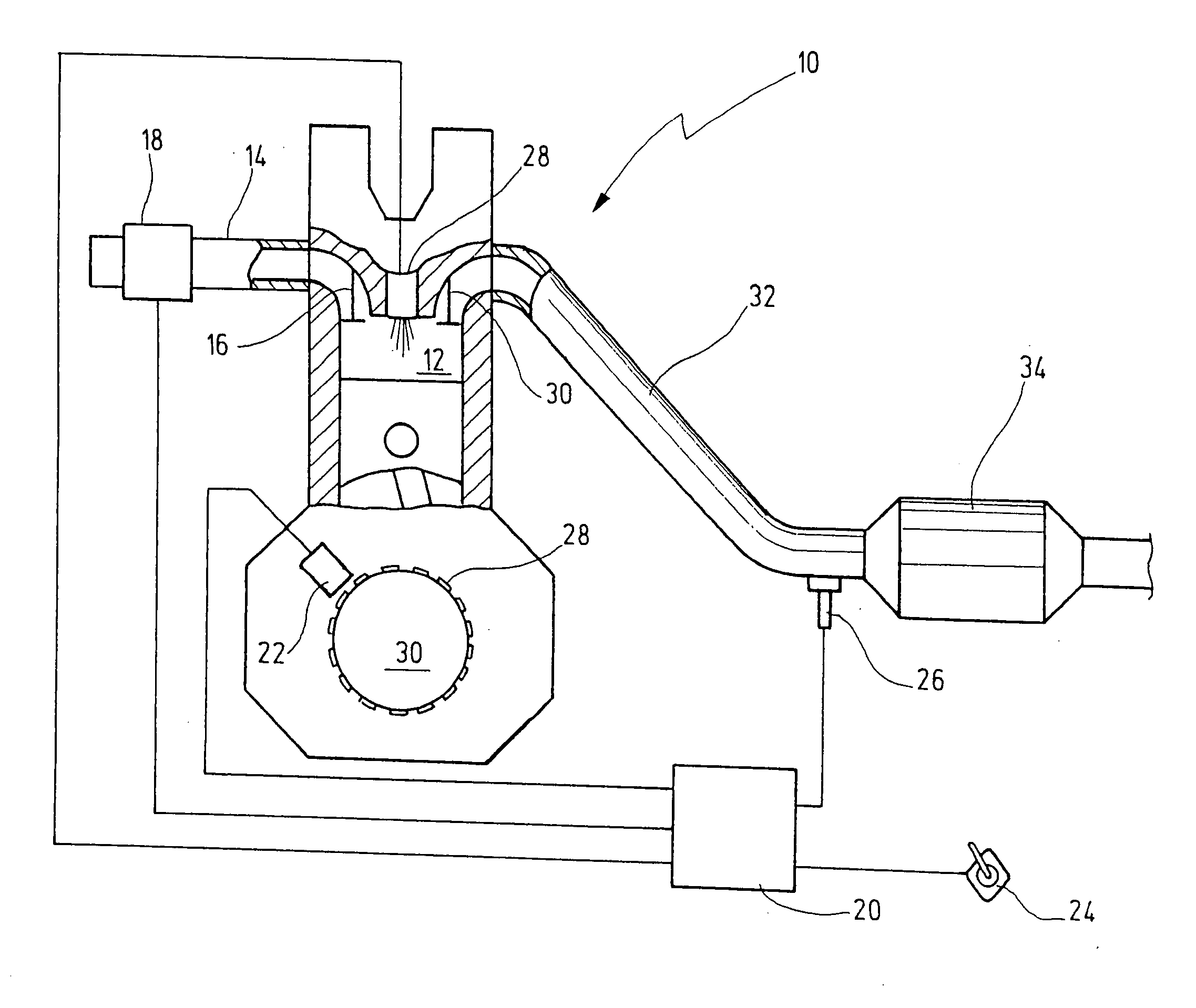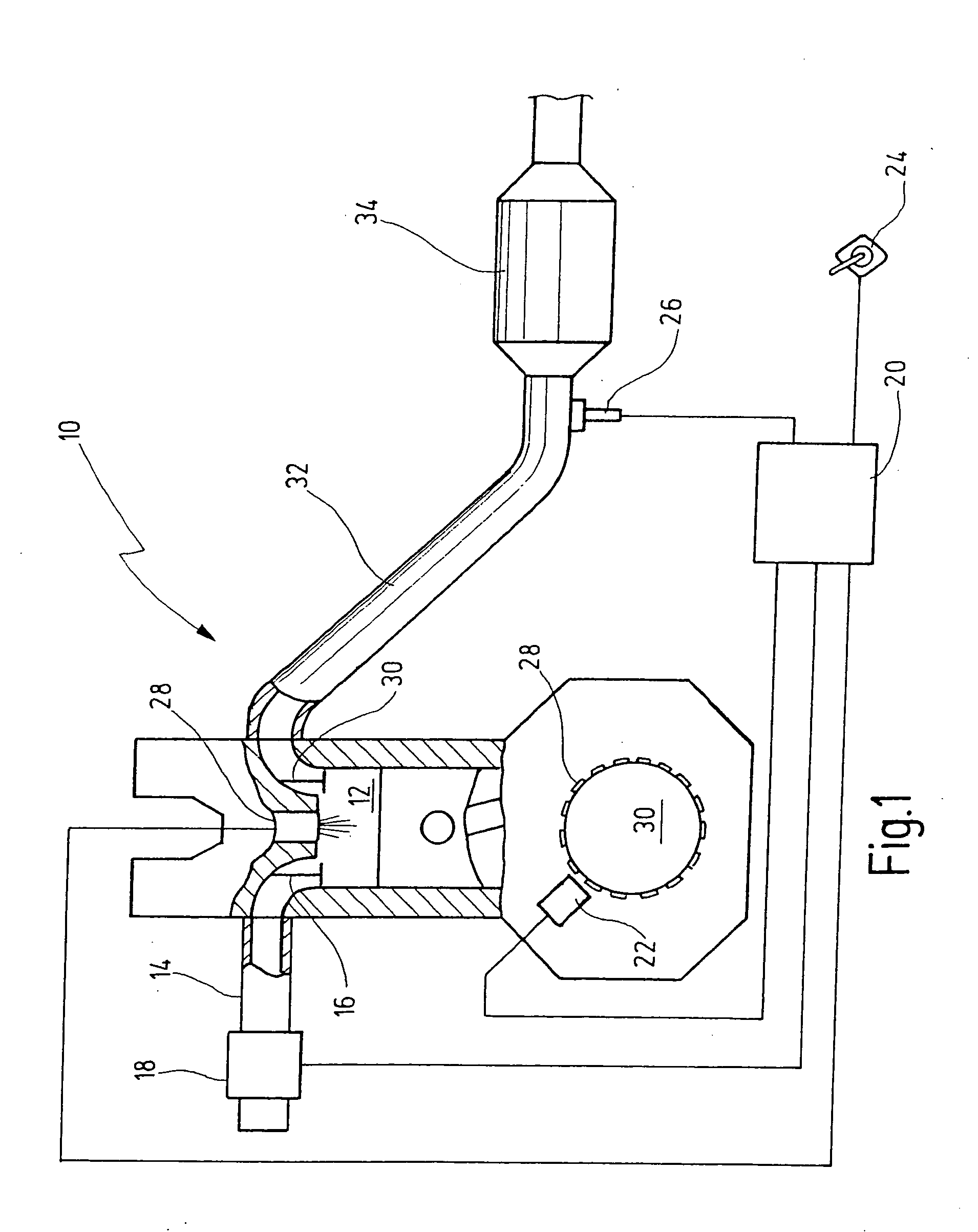Catalyst temperature modelling during exotermic operation
a catalytic converter and temperature modelling technology, applied in the direction of electrical control, exhaust treatment electric control, instruments, etc., can solve the problems of limited absorption capacity of storage catalysts, limited absorption capacity of particulate filters, and need to be regenerated regularly,
- Summary
- Abstract
- Description
- Claims
- Application Information
AI Technical Summary
Benefits of technology
Problems solved by technology
Method used
Image
Examples
Embodiment Construction
[0036] The number 10 in FIG. 1 denotes an internal combustion engine having a combustion chamber 12 in which a mixture of fuel and air is combusted. Combustion chamber 12 has air supplied to it via a vacuum line 14, the air supply being controlled by at least one intake valve 16. The mass of air taken in by internal combustion engine 10 is recorded by an air mass flow sensor 18, which passes on an air mass signal to calculating device 20, such as an electronic control unit. The signals of additional sensors are supplied to calculating device 20, of which FIG. 1 illustrates a rotary speed sensor 22, an accelerator sensor 24 and an exhaust gas sensor 26.
[0037] Signals of additional sensors, for example, concerning temperatures in the region of the internal combustion engine or concerning the transmission ratio of a post-connected torque converter, etc., may also be supplied to calculating device 20. Rotary speed sensor 22 illustrated in FIG. 1 may, for example, be an inductive sensor...
PUM
 Login to View More
Login to View More Abstract
Description
Claims
Application Information
 Login to View More
Login to View More - R&D
- Intellectual Property
- Life Sciences
- Materials
- Tech Scout
- Unparalleled Data Quality
- Higher Quality Content
- 60% Fewer Hallucinations
Browse by: Latest US Patents, China's latest patents, Technical Efficacy Thesaurus, Application Domain, Technology Topic, Popular Technical Reports.
© 2025 PatSnap. All rights reserved.Legal|Privacy policy|Modern Slavery Act Transparency Statement|Sitemap|About US| Contact US: help@patsnap.com



